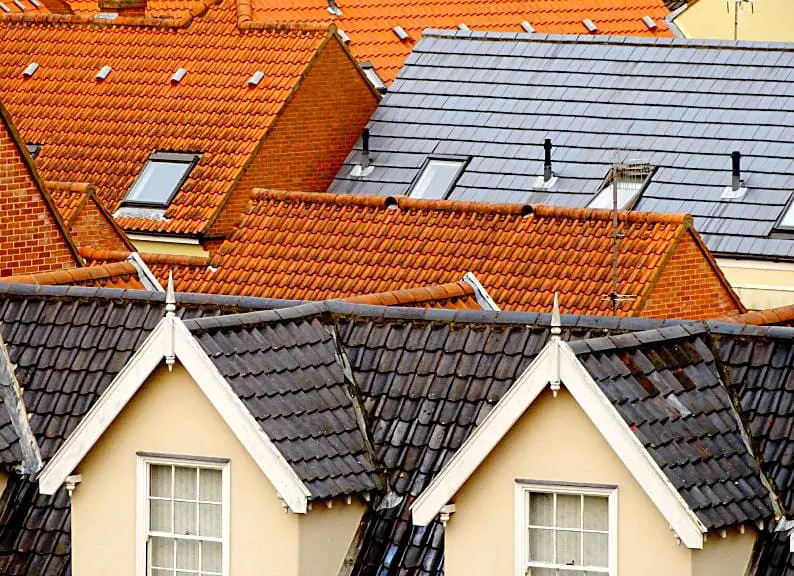Roofs are not just a protective element for our homes; they play a significant role in defining the overall aesthetic and character of a building. The choice of roof style can influence the architectural integrity, functionality, and even the energy efficiency of your home. Whether you’re building a new house or renovating an existing one, understanding the various roof styles can help you make an informed decision that complements your home’s architecture. This article delves into the most popular roof styles, highlighting their features, benefits, and ideal applications.
Gable Roof
Description
The gable roof, also known as a pitched or peaked roof, is one of the most common roof styles. It features two sloping sides that come together at a ridge, forming a triangular shape.
Features and Benefits
- Simplicity: The straightforward design makes it easy and cost-effective to build.
- Ventilation: The steep pitch allows for better attic ventilation.
- Weather Resistance: Efficiently sheds water and snow, reducing the risk of leaks and structural damage.
Ideal Applications
Gable roofs are versatile and can be seen in various architectural styles, from Colonial and Cape Cod to modern homes. Their classic look fits well with suburban neighborhoods and rural settings.
Hip Roof
Description
A hip roof has slopes on all four sides, which are of equal length and meet at a ridge. This design is more complex than a gable roof and provides a more uniform look.
Features and Benefits
- Stability: The inward slope on all sides makes it more stable and resistant to high winds.
- Space Utilization: Provides more living space under the roof compared to gable roofs.
- Aesthetic Appeal: The symmetrical look is aesthetically pleasing and suitable for various architectural styles.
Ideal Applications
Hip roofs are commonly used in ranch-style homes, cottages, and bungalows. Their sturdy design is particularly beneficial in hurricane-prone areas.
Mansard Roof
Description
The Mansard roof, also known as a French roof, has four sides with two slopes on each side. The lower slope is steeper than the upper slope.
Features and Benefits
- Extra Living Space: The design allows for additional living or storage space in the attic.
- Elegance: Adds a sophisticated, classic look to buildings.
- Flexibility: The upper slope can be designed in various styles, including flat or curved.
Ideal Applications
Mansard roofs are often found in French-style homes and buildings, such as Second Empire and Beaux-Arts architectures. They are ideal for homeowners looking to maximize attic space and add a touch of elegance.
Flat Roof
Description
Flat roofs have a slight pitch to allow for water drainage. They are most commonly used in commercial buildings but can also be found in residential homes.
Features and Benefits
- Modern Aesthetic: Provides a sleek, contemporary look.
- Usable Space: Can be used as a terrace, garden, or additional living space.
- Ease of Construction: Easier and quicker to construct compared to pitched roofs.
Ideal Applications
Flat roofs are popular in modern and contemporary home designs. They are ideal for urban settings where maximizing outdoor space is desirable.
Shed Roof
Description
A shed roof, also known as a skillion or lean-to roof, has a single sloping side. It is similar to a flat roof but with a more pronounced pitch.
Features and Benefits
- Simplicity: Simple design makes it cost-effective and easy to build.
- Drainage: The single slope allows for efficient water drainage.
- Modern Appeal: Fits well with contemporary and minimalist architectural styles.
Ideal Applications
Shed roofs are often used in home additions, sheds, and porches. They are also popular in modern homes that favor a clean, minimalist look.
Gambrel Roof
Description
The gambrel roof, often associated with barns, has two different slopes on each side. The lower slope is steep, while the upper slope is more gentle.
Features and Benefits
- Ample Attic Space: Provides more attic or storage space compared to other roof styles.
- Distinctive Look: Adds a unique, rustic charm to buildings.
- Efficiency: The design allows for efficient water and snow runoff.
Ideal Applications
Gambrel roofs are typically used in barn-style homes, farmhouses, and Dutch Colonial houses. They are perfect for homeowners looking to maximize attic space and add a distinctive, rustic look to their home.
Butterfly Roof
Description
The butterfly roof is an inverted version of the traditional gable roof, with two slopes that meet in the middle, forming a V shape.
Features and Benefits
- Modern Design: Offers a unique, contemporary look.
- Rainwater Collection: The V shape facilitates rainwater collection.
- Natural Light: The central valley allows for large windows and increased natural light.
Ideal Applications
Butterfly roofs are popular in mid-century modern and contemporary home designs. They are ideal for eco-conscious homeowners interested in rainwater harvesting and natural lighting.
Conclusion
Choosing the right roof style is crucial for the functionality, aesthetics, and value of your home. Each roof style offers distinct advantages and is suitable for specific architectural designs and climates. Gable and hip roofs provide classic looks and durability, while flat and shed roofs offer modern appeal and practical outdoor space. Mansard and gambrel roofs maximize attic space and add unique charm, whereas butterfly roofs cater to contemporary tastes and environmental considerations.


